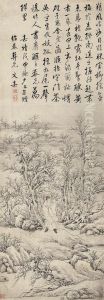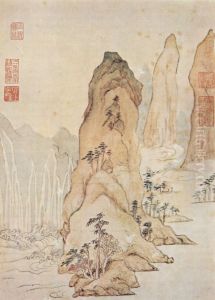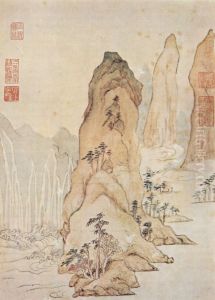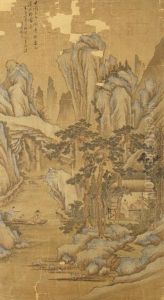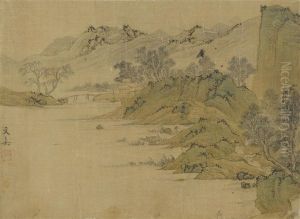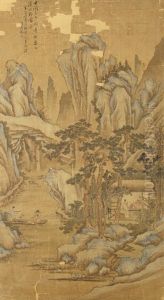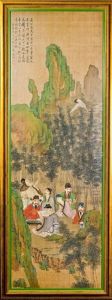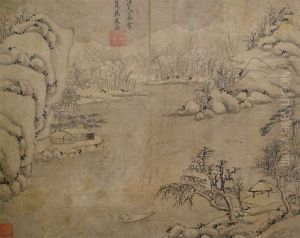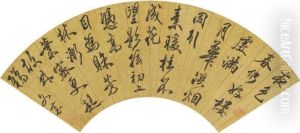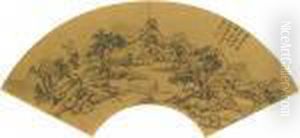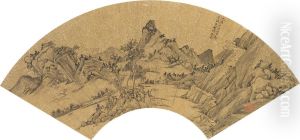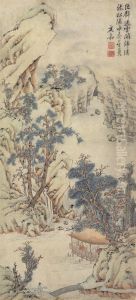Wen Jia Paintings
Wen Jia, also known by his courtesy name Wen Zhengming, was a prominent Chinese painter, calligrapher, and scholar during the Ming Dynasty. He was born in 1501 in Suzhou, which was then one of the cultural centers of China. Wen Zhengming was a leading figure in the Wu School of painting and is considered one of the 'Four Masters of the Ming Dynasty,' alongside Shen Zhou, Tang Yin, and Qiu Ying.
Wen Jia's upbringing was steeped in the arts and culture, as his family was well-educated and had a strong tradition in these fields. He passed the imperial civil service examinations and held several official posts, but he is most renowned for his artistic achievements. Throughout his life, Wen Jia focused on the scholarly arts, including painting, poetry, and calligraphy, and he was deeply influenced by the literati ideals of personal expression and moral integrity.
His paintings often featured landscapes, bamboo, orchids, and old trees, executed with refined brushwork and a serene, scholarly atmosphere. His works are characterized by their intricate detail and adherence to the classical Chinese painting style. Wen Jia's calligraphy was also highly admired, and he was known for his elegant and powerful style, which had a significant impact on the development of Ming Dynasty calligraphy.
In addition to his artistic pursuits, Wen Jia was an important cultural figure who mentored many young artists and had a wide circle of friends and students. His home became a hub for cultural gatherings, where intellectuals of the time would discuss literature, art, and philosophy.
Wen Jia lived through a period of considerable political and social change in China, and his works reflect the literati's response to these changes. His art is considered emblematic of the learned gentleman's ideals and the pursuit of a harmonious relationship between man and nature, a central theme in Chinese culture.
Wen Jia passed away in 1583, leaving behind a legacy that would influence generations of artists to come. Today, his works are held in high regard and can be found in museum collections around the world. They continue to be studied and admired for their beauty, technical mastery, and cultural significance.


